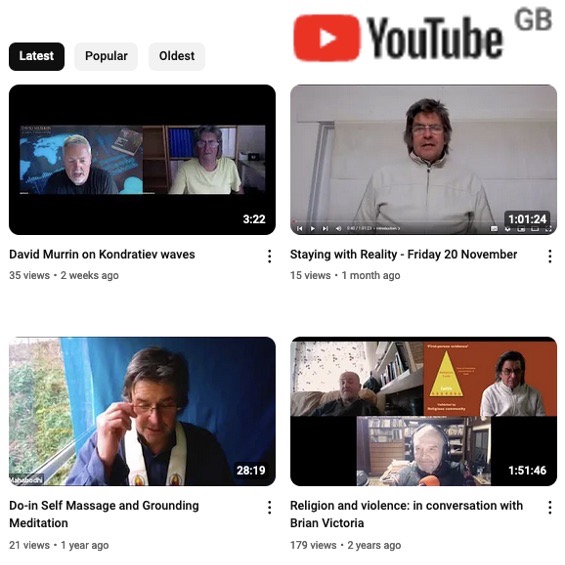Human downgrading by social media
Below is an excerpt from my forthcoming book… © Mahabodhi Burton 12 minute read Check out this fascinating excerpt from the chapter ‘Transhumanism and Alienation,’ which draws on the 1995 book War of the Worlds: Cyberspace and the High Tech Assault on Reality where Mark Slouka lays out the foundations for what we see today: the downgrading and commodification of human experience, and its remedy: as suggested by Tristan Harris from the Centre for Humane Technology. Are you concerned about the future of technology and its impact on society? This excerpt is a must-read. The Transhumanist culture of unmoral alienation In 1995 Mark Slouka published a chilling book called War of the Worlds: Cyberspace and the High Tech Assault on Reality.[1] In the various chapters he catalogues the fronts on which that assault is taking place: ‘Reality is death’: The Spirit of Cyberspace ‘Springtime for Schizophrenia’: The Assault on Identity Virtual World: The Assault on Place Highway to Hive: The Assault on Community A Republic of Illusion: The Assault on Reality (My emphasis) The Internet only communicated 1% of the information flowing through two-way telecommunications networks in the year 1993, by 2007 it was more than 97%,[2] so Slouka’s concerns were largely about a vocal minority of transhumanist enthusiasts: ‘My quarrel is with a relatively small, disproportionately influential group of self-described ‘Net Religionists’ and ‘wannabe gods’ who belief that the physical world can (and should) be ‘downloaded’ into a computer, who believe that the future of mankind is not in RL (real life) but in some form of VR (virtual reality); who are working very hard (and spending enormous amounts of the federal and private money) to engineer their very own version of the apocalypse. As intelligent as they are single-minded, these people have been ignored by the majority of humanists for too long; it’s time we started listening.’[3] In a poignant passage Slouka opines the lack of caution: ‘Given the enormous effect the digital revolution may come to have on our lives … there is something downright eerie about the lack of debate, the conspicuous absence of dissenting voices, the silence of the critics. Congress seems uninterested; watchdog groups sleep. Like shined deer, we seem to be wandering en masse onto the digital highway, and the only concern heard in the land, by and large, is that some of us may be left behind.’[4] For some, the novelist and voices techno-evangelist Robert Coover explains, humanity has to do with souls and ‘depth’ and the search for meaning and purpose; with tradition, ritual, mystery and individualism.’ For others, like himself, it has more to do with the spiritualism of...
Techno-Feudalism equals caste
Below is an excerpt from my forthcoming book… © Mahabodhi Burton 7 minute read Check out this fascinating 7-minute excerpt from the chapter ‘Transhumanism and Alienation,’ which delves into the contemporary challenges posed by the increasing influence of Silicon Valley, social media algorithms, and Artificial Intelligence in our daily lives. The excerpt examines the tragic social consequences of an alienated geekish mindset that often accompanies this technological landscape. Are you concerned about the future of technology and its impact on society? This excerpt is a must-read. New Feudalism Governing elites in Britain in the nineteenth century: i.e., the middle-classes saw themselves as cultured and therefore as truly human: whilst they looked down upon the masses: the workers and peasants. In this regard, social commentators in recent years have come to speak of a new feudalism: a primary characteristic of which is that individuals’ public lives are increasingly governed by business corporations:[1] ‘Neo-feudalism or new feudalism is a theorized contemporary rebirth of policies of governance, economy, and public life, reminiscent of those which were present in many feudal societies. Such aspects include but are not limited to: Unequal rights and legal protections for common people and for nobility, dominance of societies by small and powerful elite groups of society, and relations of lordship and serfdom between the elite and the people. Often the former are rich and the latter poor.’[2] Joel Kotkin outlines what he thinks will happen in his audio book The Coming of Neo-Feudalism: A Warning to the Global Middle Class:[3] ‘Following a remarkable epoch of greater dispersion of wealth and opportunity, we are inexorably returning towards a more feudal era marked by greater concentration of wealth and property, reduced upward mobility, demographic stagnation, and increased dogmatism. If the last 70 years saw a massive expansion of the middle-class, not only in America but in much of the developed world, today that class is declining and a new, more hierarchical society is emerging. ‘The new class structure resembles that of Medieval times. At the apex of the new order are two classes–a reborn clerical elite, the clerisy, which dominates the upper part of the professional ranks, universities, media, and culture, and a new aristocracy led by tech oligarchs with unprecedented wealth and growing control of information. These two classes correspond to the old French First and Second Estates. ‘Below these two classes lies what was once called the Third Estate. This includes the yeomanry, which is made up largely of small businesspeople, minor property owners, skilled workers, and private-sector oriented professionals. Ascendant for much of modern history, this class is in decline while...
Buddhist guilt / remorse
Below is an excerpt from my forthcoming book… © Mahabodhi Burton 4 minute read This excerpt is from the chapter on ‘Woke As Old Testament Religion’ and goes into the Buddhist view of guilt Buddhism and guilt The Buddhist word associated with anxiety, guilt and remorse is kaukrtya.[1] According to Subhuti,[2] it is of three kinds: general anxiety; genuinely ethical feeling; and neurotic guilt. General anxiety Functional kaukrtya or generalized anxiety is a sort of troublesome background noise one experiences in one’s consciousness: an obscure feeling of unease or tension, like the feeling you have when you wake up at night and think, ‘Did I lock the back door before I went to bed? One could argue that there could be an ethical element to this sort of feeling: because lack of mindfulness becomes negligence; and negligence can cause harm to others. Nevertheless, we would not—on the whole—consider this kind of feeling to indicate a moral misdemeanour, as it does not involve any intention to cause harm, nor to take advantage of anyone. It is more a mental alarm bell that goes off to warn us that we have omitted to do something that needs to be done. And we can respond to it by recognizing it and taking appropriate action to remedy the situation. Sometimes, we realize that there is in fact nothing that we can do about it: and so we might as well relax: there is no point in worrying about the safety of air travel when the plane you are in has already left the ground. Genuine ethical remorse We experience ethical kaukrtya or remorse when–in our heart of hearts–we know that we have done harm: when we have offended against our own ethical values. We only do feel bad (i.e., pain) because our state of mind is what Buddhists call skilful: which mean it is oriented towards, and realizes, the well-being of ourselves and others. This is the kind of wholesome ethical anxiety I mentioned in Chapter 1; in relation to religion. Such remorse leads naturally to personal reparations for any damage that we have caused; and to caution in relation to our current mental states, lest we create further such damage in the future. Neurotic or irrational guilt Yet there is also an unwholesome version of ethical anxiety: the kind of kaukrtya that Subhuti terms neurotic or false remorse. In this case our worry is about what people will think. Behind it lies fear of punishment; losing love, acceptance or status. Buddhism has the concept of near and far enemies: for instance the far enemy of compassion—its opposite—is cruelty: instead...
The Systems Model of Creativity
Below is an excerpt from my forthcoming book… © Mahabodhi Burton 20 minute read This excerpt is drawn from the chapter titled ‘The Evidence Bases in Religion, Science, and Politics.’ It delves into the intricate dynamics of the creative process, revealing its three distinct facets: the initial act of creation, often incubated in solitude; the custodians or gatekeepers of the tradition who serve as its public ambassadors; and its eventual integration into mainstream culture. This framework is applicable across various domains, spanning the realms of arts, religion, and science. The Nature of Religion There is no real consensus on what Religion is, although we could generalize and say that religion refers to humanity’s relationship to ‘patterns in the universe’ that are seen as transcendent, sometimes but not always supernatural, and which thus are believed to provide ethical guidance and give meaning to life.[1] To help votaries remain mindful of these patterns, each religion will establish certain places, rituals and narratives as sacred: and thus worthy of reverence; it is through such mindfulness that the religious practitioner believes their life will gain meaning: allowing them to ultimately resolve the existential problems in life: such as old age, sickness and death. Huston Smith is widely regarded as the most eloquent and accessible contemporary authority on the history of religions. In his book The World’s Religions he colourfully outlines the difference between the values purported by religions and how those values often ‘manifest’ on the ground: ‘Perhaps someday someone will write a book about the great religions that roots them to their social settings. This, though, is a book I shall read, not write. … This book is not a balanced account of its subject. The warning is important. I wince to think of the shock if the reader were to close the chapter on Hinduism and step directly into the Hinduism described by Nehru as “a religion that enslaves you”: its Kali Temple in Calcutta, the curse of her caste system, her two million cows revered to the point of nuisance, her fakirs offering their bodies as sacrifice to bedbugs. Or what if the reader were transported to Bali, with its theaters named the Vishnu—Hollywood and its bookstores that do brisk business in Klasik Comics, in which Hindu gods and goddesses mow down hosts of unsightly demons with cosmic ray guns? I know the contrast. I sense it sharply between what I have written of Taoism and the Taoism that surrounded me as a boy in China: its almost complete submergence in augury, necromancy, and superstition. It is like the contrast between the Silent Christ and the Grand Inquisitor, or between the stillness of Bethlehem...
Kindness As Constructive Imagination
Below is an excerpt from my forthcoming book… © Mahabodhi Burton 10 minute read This excerpt is from the chapter ‘The Evidence Bases in Religion, Science and Politics,’ in which I explore how kindness is developed through paying attention to what living beings truly are: a process Tse-Fu Kuan calls ‘Constructive Imagination.’ Feeling and emotion Metta—Universal Loving Kindness–is one way that we redirect our emotions along the most wholesome pathway; it is, however, very important first to be clear about the difference between feeling (vedana) and emotion–as an aspect of ‘mind’ or citta. Sangharakshita: ‘When Buddhist psychology refers to developing mindfulness of feelings, however, something rather different is meant from the “getting in touch with one’s feelings” with which psychotherapy is concerned–something less complex, perhaps more useful. Indeed, being able to identify feelings (in the sense of vedana as defined by the Buddhist tradition) is what makes it possible for us to follow the Buddhist path. The Pali term vedana refers to feeling not in the sense of the emotions, but in terms of sensation. Vedana is whatever pleasantness or unpleasantness we might experience in our contact with any physical or mental stimulus. ‘To understand what we would call emotion, Buddhism looks at the way in which that pleasant or painful feeling is interwoven with our reactions and responses to it.’[1] Feeling as vedana, then, is just experience: specifically the experience of pleasure, pain or neither. On the other hand, the etymology[2] of the word ‘emotion’ is connected with ‘moving out,’ in the sense of ‘responding.’ Emotion, then, is that aspect of the mind or psyche (Pali: citta) which ‘moves in relation to experience.’ Citta encompasses the sum total of how the psyche moves in response to experience: it therefore includes thinking, emotion and the distribution of attention: It is useful to consider the above diagram. In the teaching of the Four Foundations of Mindfulness (satipatthanas,) the Buddha says we need to bring mindfulness to four areas, if we are to bring happiness into the world, avoid suffering and ultimately attain Nirvana.[3] These foundations are body (kaya,) feeling (vedana,) mind (citta) and views (dhammas) and they all condition each other. Usually that conditioning, when taken between feeling and emotion, involves moving towards pleasurable experiences that are desired and away from painful experiences that are undesired—and maybe not responding at all to neutral experiences. Emotion then is most of the time an unconscious and reactive response to feeling; while feeling and the emotion feel to be one thing, they are actually distinct. Feeling is just what is presented to us in the moment: thus, it is something we...






 Users Today : 229
Users Today : 229 Users Yesterday : 110
Users Yesterday : 110 This Month : 869
This Month : 869 Total Users : 16026
Total Users : 16026
